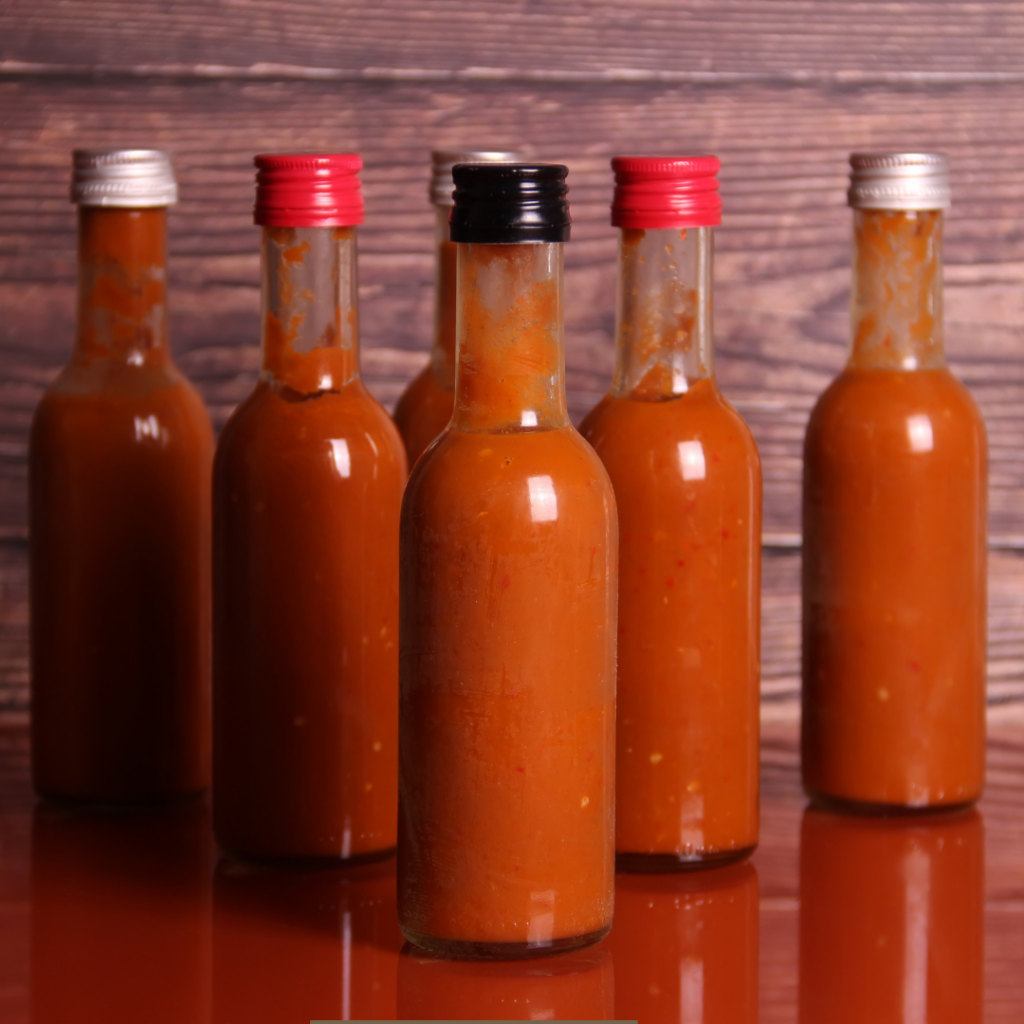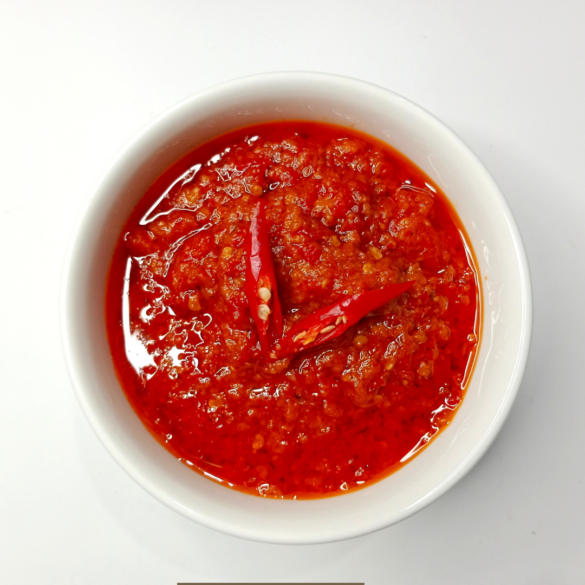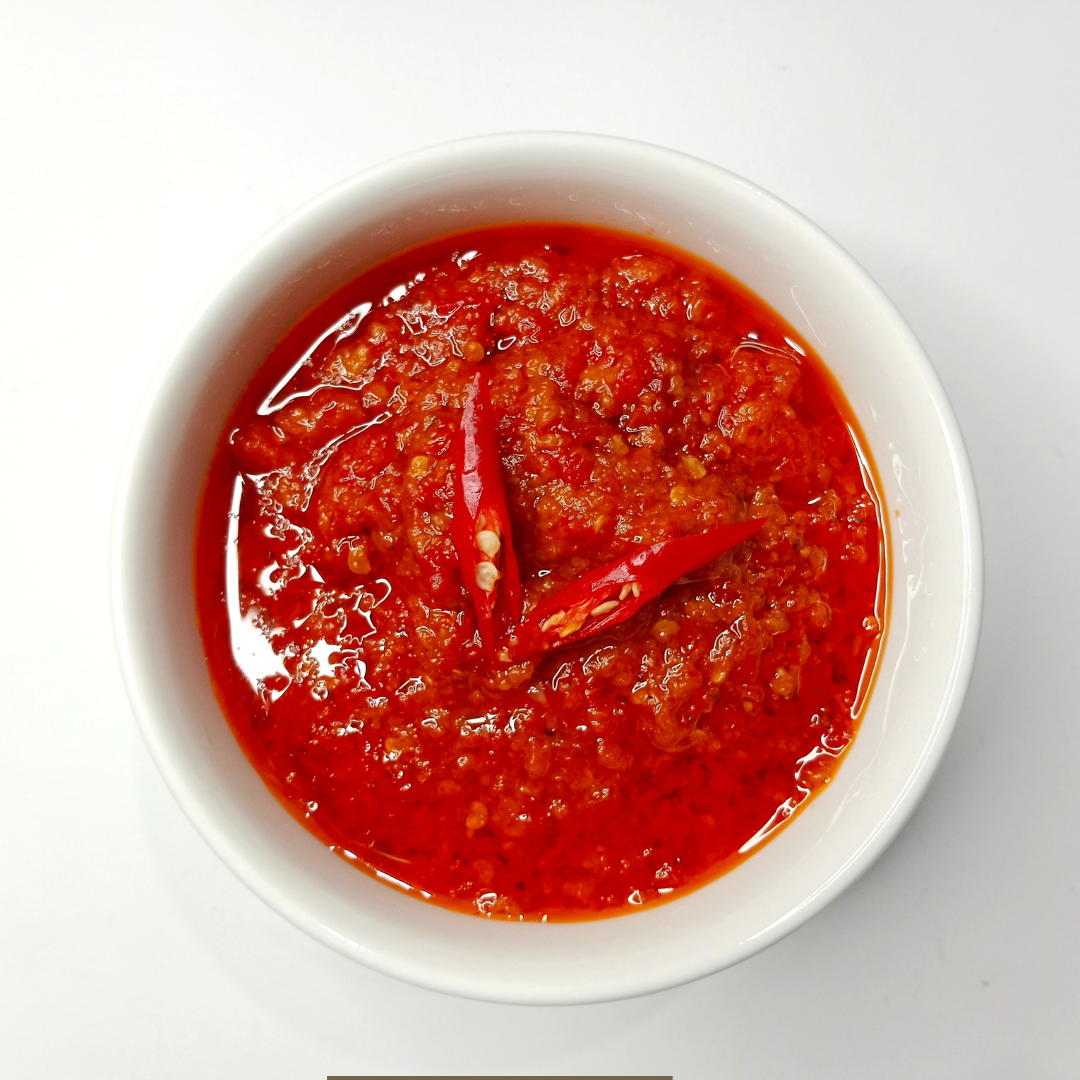For those who share my affection for turning up the heat in their meals, you understand that a hot sauce does more than just send a wave of spice through your food—it invokes an experience, igniting a passion with every drop. Sweet Baby Ray’s hot sauce, with its rich history and dedication to flavor, offers a canvas for us to explore and replicate in our kitchens.
How to make Sweet Baby Ray’s hot sauce
Sweet Baby Ray’s Hot Sauce is a spicy condiment produced by the same company known for its famous barbecue sauces. While Sweet Baby Ray’s is famous for its rich and tangy barbecue sauces, their hot sauce offers a kick of heat that complements a variety of dishes. It typically features a blend of chili peppers, vinegar, and other spices to add heat and flavor.
Ingredients:
To recreate the vibrant flavors of Sweet Baby Ray’s Hot Sauce, you’ll need the following ingredients:
- 1 cup of aged cayenne red peppers (you can adjust based on your heat preference)
- 1 cup of white vinegar
- 2-3 cloves of garlic, finely minced
- 1 tablespoon of paprika (to add color and a bit of sweetness)
- 1 teaspoon of salt (or to taste)
- 1 teaspoon of black pepper
- Optional: 1 tablespoon of smoked paprika or chipotle powder for a smoky flavor twist
- Optional: 2 tablespoons of tomato paste for a richer body and slight sweetness
- Optional: 1-2 tablespoons of honey or brown sugar for a hint of sweetness
Instructions:
- Prepare the Peppers: If using fresh cayenne peppers, wash them and roughly chop them. Remember to wear gloves to avoid irritation from the capsaicin.
- Combine Ingredients: In a medium saucepan, combine the chopped peppers, vinegar, minced garlic, paprika, salt, and pepper. If you’ve chosen any optional ingredients, add them now.
- Simmer: Bring the mixture to a simmer over medium heat, then reduce the heat to low. Let it simmer for 20-30 minutes, stirring occasionally. The mixture should slightly thicken and the flavors will meld together.
- Blend: Remove the saucepan from heat once the sauce has simmered and the ingredients are soft. Carefully blend the mixture with an immersion or a regular blender until smooth. If the sauce is too thick, add more vinegar or water to reach your desired consistency.
- Strain (Optional): To make the sauce smoother, strain it through a fine mesh strainer to remove any solid bits.
- Taste and Adjust: Give your hot sauce a taste and adjust seasonings as needed. If you desire more heat, consider adding a bit more cayenne or a pinch of chili flakes.
- Bottle: Pour the hot sauce into sterilized bottles and seal them. Let it cool at room temperature before storing it in the refrigerator.
- Rest: Ideally, leave your sauce in the fridge for a day or two to allow the flavors to meld and develop fully.
Tips for Success:
- Experiment with Vinegar: White vinegar is a classic choice, but apple cider vinegar can add an excellent depth of flavor.
- Balance Your Flavors: The key to a great hot sauce is balance. If it’s too acidic, add a bit of sweetness with honey or sugar if it’s too thick, thin it with additional vinegar or water.
- Heat Levels: Adjust the quantity of cayenne peppers depending on your heat tolerance. Adding more peppers or including seeds will increase the spiciness.
- Preservation: Properly bottled and refrigerated, your homemade hot sauce can last several months. Always use clean utensils when serving to prevent contamination.
What to serve with
Sweet Baby Ray’s Hot Sauce is known for its versatility and ability to enhance many dishes with its optimal balance of heat and flavor.
For Breakfast:
- Eggs: Drizzle the hot sauce over scrambled eggs or fold it into omelets for a spicy kick.
- Breakfast Burritos: Amp up your breakfast burritos or breakfast tacos with a few dashes.
- Hash Browns and Home Fries: A sprinkle of hot sauce can add an excellent heat to these classic breakfast sides.
Appetizers and Snacks:
- Wings: Toss chicken wings in your hot sauce after baking or frying for a classic appetizer.
- Dips: Mix hot sauce with ranch dressing, blue cheese, or sour cream to create a spicy dip for vegetables, chips, and pretzels.
- Deviled Eggs: Add a few drops to your deviled egg filling for a hot variation on this classic snack.
Main Dishes:
- Grilled Meats: Brush it on grilled chicken, steak, or pork chops as a glaze in the last few minutes of cooking.
- Seafood: A drizzle over grilled shrimp, fish tacos, or crab cakes enhances the oceanic flavors.
- Burgers and Hot Dogs: To spice things up, mix it into your condiments or douse it directly on your burgers and dogs.
- Stir-Fries: Incorporate the sauce into your stir-fry for a tangy, spicy addition.
Soups and Stews:
- Chili: Stir in a generous amount of hot sauce to elevate the complexity of flavors in your chili recipes.
- Soup: Add a few drops to everything from tomato soup to chowders for a warming sensation.
Sides:
- Mac and Cheese: Fold it into your cheesy sauce for a spicy take on this comfort food classic.
- Roasted Vegetables: Toss hot sauce with vegetables before roasting for an extra layer of flavor.
- Baked Beans: A tablespoon or two in your baked beans can transform this side dish.
Ingredients Substitutes

Creating a homemade hot sauce inspired by Sweet Baby Ray’s can be an exciting challenge. If you’re looking to replicate or adapt your version of Sweet Baby Ray’s Hot Sauce but require substitutes for specific ingredients, here’s a guide that can help you maintain a similar flavor profile while using alternative components:
Base Ingredients and Their Substitutes:
Chili Peppers (base ingredient)
Original: For a traditional kick, Cayenne peppers are commonly used in hot sauces.
Substitutes:
- For a milder sauce: Anaheim or poblano peppers.
- For more heat: Habanero or ghost peppers.
- For smokiness: Chipotle peppers (which are smoked jalapeños).
Vinegar (for tang and preservation)
Original: White vinegar is a common choice due to its neutral flavor.
Substitutes:
- Apple cider vinegar offers a sweeter, slightly fruity tang.
- Rice vinegar is milder and less acidic, suitable for a subtle tang.
- Balsamic vinegar can add depth with its rich and slightly sweet profile.
Sweetener (to balance heat)
Original: High fructose corn syrup or sugar is often used.
Substitutes:
- Honey or agave syrup for a natural sweetness.
- Maple syrup for a unique, rich flavor.
- Brown sugar for a deeper molasses-like sweetness.
Garlic (for depth and flavor)
Original: Fresh garlic or garlic powder.
Substitutes:
- Garlic flakes or granulated garlic if you don’t have fresh garlic.
- A pinch of asafoetida can mimic a garlic-like flavor in allergy scenarios.
- Salt (to enhance flavor)
Original: Table salt.
Substitutes:
- Kosher salt or sea salt for a more natural taste.
- Celery salt can add a unique flavor twist.
- Soy sauce or tamari is used as a salt replacement with added umami.
Optional Ingredients and Their Substitutes:
Tomato Paste (for texture and slight sweetness)
Original: Tomato paste.
Substitutes:
- Ketchup for a similar flavor but slightly thinner consistency.
- Pureed roasted red peppers for a different flavor profile and smooth texture.
Spices (customizing the flavor profile)
Original: Paprika, cayenne pepper, or black pepper.
Substitutes:
- Smoked paprika for a smoky undertone.
- White pepper for a less visible yet spicy option.
- Chili flakes for an added spice kick with visible specs.
Xanthan Gum (for thickening)
Original: Xanthan gum, which is a common thickener in sauces.
Substitutes:
- Cornstarch or arrowroot powder is used with a bit of water to make a slurry before adding.
- Gelatin powder requires a different handling as it needs to bloom in cold water first.
Final Thoughts
Creating your own Sweet Baby Ray’s hot sauce is about replicating a taste and infusing your personality into every drop.
More Sweet Baby Ray’s Recipes:

Ingredients
- 1 cup of aged cayenne red peppers (you can adjust based on your heat preference)
- 1 cup of white vinegar
- 2-3 cloves of garlic, finely minced
- 1 tablespoon of paprika (to add color and a bit of sweetness)
- 1 teaspoon of salt (or to taste)
- 1 teaspoon of black pepper
- Optional: 1 tablespoon of smoked paprika or chipotle powder for a smoky flavor twist
- Optional: 2 tablespoons of tomato paste for a richer body and slight sweetness
- Optional: 1-2 tablespoons of honey or brown sugar for a hint of sweetness
Instructions
- Prepare the Peppers: If using fresh cayenne peppers, wash them and roughly chop them. Remember to wear gloves to avoid irritation from the capsaicin.
- Combine Ingredients: In a medium saucepan, combine the chopped peppers, vinegar, minced garlic, paprika, salt, and pepper. If you've chosen any optional ingredients, add them now.
- Simmer: Bring the mixture to a simmer over medium heat, then reduce the heat to low. Let it simmer for 20-30 minutes, stirring occasionally. The mixture should slightly thicken and the flavors will meld together.
- Blend: Remove the saucepan from heat once the sauce has simmered and the ingredients are soft. Carefully blend the mixture with an immersion or a regular blender until smooth. If the sauce is too thick, add more vinegar or water to reach your desired consistency.
- Strain (Optional): To make the sauce smoother, strain it through a fine mesh strainer to remove any solid bits.
- Taste and Adjust: Give your hot sauce a taste and adjust seasonings as needed. If you desire more heat, consider adding a bit more cayenne or a pinch of chili flakes.
- Bottle: Pour the hot sauce into sterilized bottles and seal them. Let it cool at room temperature before storing it in the refrigerator.
- Rest: Ideally, leave your sauce in the fridge for a day or two to allow the flavors to meld and develop fully.
